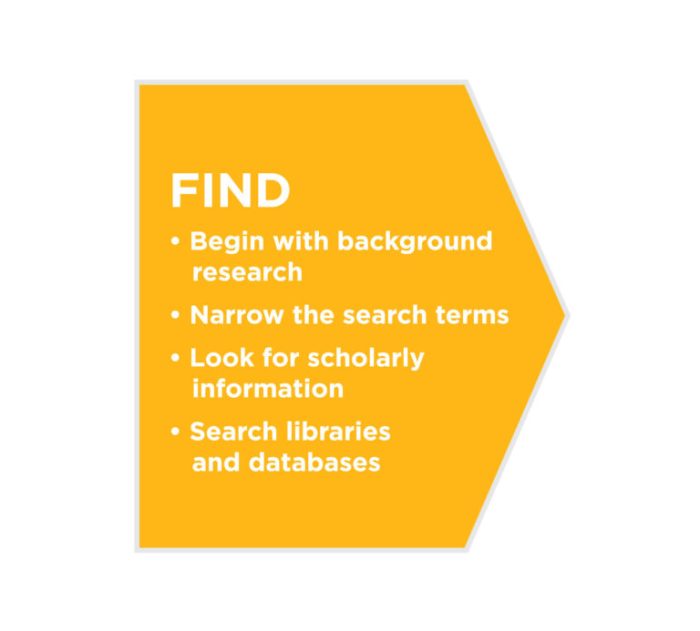Find the Right Religion for You is a journey of self-discovery, exploration, and connection. It’s about understanding the motivations behind your spiritual quest, from personal experiences to cultural influences. This guide explores various religious traditions, helping you evaluate your values and beliefs. We’ll delve into engaging with communities, interpreting texts, and considering personal growth. Ultimately, it’s a process of finding a path that resonates with you, offering a framework for spiritual fulfillment.
This comprehensive exploration delves into the complexities of finding a spiritual home. We’ll analyze different approaches to finding a religion, from personal reflection to community engagement, while examining the key tenets of major world religions and their historical contexts. The guide also highlights the significance of personal values, the role of religious communities, and the importance of critical thinking when navigating religious texts and teachings.
We’ll also discuss how personal growth can be fostered within a religious framework, alongside the support and guidance offered by spiritual leaders.
Understanding the Search for Spiritual Connection

The quest for spiritual connection is a deeply personal and multifaceted journey. It’s not a simple checklist or a one-size-fits-all process. Individuals embark on this search for a variety of reasons, driven by internal desires, external influences, and life experiences. Understanding these motivations and the diverse paths people take towards spiritual fulfillment is crucial for fostering empathy and respect in a world of diverse beliefs.The motivations behind seeking a religion are as varied as the individuals themselves.
Some are drawn to the community and shared values a faith provides, while others seek solace and meaning in the face of life’s challenges. Still others are captivated by the philosophical and historical richness of religious traditions. The search for a sense of belonging, a framework for understanding the universe, and a moral compass are all common motivations.
The journey itself is often shaped by personal experiences, cultural contexts, and individual reflections.
Motivations Behind Seeking a Religion
Individuals often seek spiritual connection to find answers to life’s fundamental questions, such as the meaning of existence, the nature of good and evil, and the purpose of human life. This search for meaning can be sparked by significant life events, personal crises, or a deep desire to connect with something larger than themselves. Some people find solace in the rituals and traditions of a religion, seeking comfort and guidance during times of hardship.
Others may be drawn to the moral codes and ethical frameworks offered by various faiths.
Different Approaches to the Search
People approach the search for spiritual fulfillment in diverse ways. Some engage in introspective reflection, meticulously examining their own beliefs and values. Others actively seek out religious communities, immersing themselves in the practices and teachings of a particular faith. Still others explore religious texts and philosophies, engaging in intellectual study to gain a deeper understanding of different spiritual traditions.
Each method offers unique insights and perspectives on the path to spiritual fulfillment.
Role of Personal Experiences
Personal experiences play a pivotal role in shaping religious choices. A traumatic event might lead someone to seek solace in a faith that offers support and guidance. A profound sense of awe and wonder, perhaps from witnessing a natural phenomenon, can also inspire a deep spiritual connection. Conversely, positive experiences within a religious community can foster a sense of belonging and purpose.
Individuals draw upon their own personal narratives to forge a connection with their spiritual beliefs.
Influence of Cultural and Societal Factors
Cultural and societal influences significantly shape religious affiliation. The values and beliefs prevalent in a person’s community often play a crucial role in shaping their understanding of spirituality. The traditions, rituals, and social structures of a particular culture can influence the type of religion or faith an individual embraces. Historical events, social movements, and political landscapes also influence the prevalence and acceptance of different religions in various societies.
Comparing Approaches to Finding a Religion
| Approach | Description | Strengths | Weaknesses |
|---|---|---|---|
| Personal Reflection | Intense self-examination and introspection to understand one’s own values and beliefs. | Promotes self-awareness and clarity of personal convictions. | Can be isolating and lack external validation. May take considerable time and effort. |
| Community Engagement | Active participation in a religious community, including attending services, engaging in fellowship, and learning from others. | Provides a sense of belonging, support, and shared experience. | May require adapting to specific community norms and expectations. |
| Intellectual Study | Deep investigation of religious texts, philosophies, and historical contexts. | Enhances understanding of different perspectives and fosters critical thinking. | Can be overwhelming and complex, requiring substantial time commitment. May not directly lead to spiritual fulfillment. |
Exploring Various Religious Traditions: Find The Right Religion For You
Delving into the rich tapestry of religious traditions offers a profound understanding of human spirituality and cultural diversity. Each faith, with its unique history and beliefs, provides a framework for meaning and purpose in life. This exploration will examine the core tenets, practices, and histories of some of the world’s major religions.A comparative analysis reveals both the common threads that bind humanity’s spiritual quest and the striking differences that shape distinct religious expressions.
By understanding these nuances, we can foster greater empathy and appreciation for the diverse ways in which people seek connection to something larger than themselves.
Core Tenets of Major World Religions
Understanding the fundamental beliefs of various faiths is crucial for appreciating their diverse approaches to life and spirituality. Different religions offer varying perspectives on the nature of reality, the human condition, and the path to a meaningful existence.
- Christianity emphasizes the teachings of Jesus Christ, focusing on love, forgiveness, and redemption. It centers around the belief in one God, who is Father, Son (Jesus), and Holy Spirit. Key concepts include salvation through faith in Jesus, the Bible as the sacred text, and the importance of prayer and worship.
- Islam centers on the teachings of the Prophet Muhammad, emphasizing submission to the will of Allah (God). Core tenets include the five pillars: Shahada (declaration of faith), Salat (prayer), Zakat (charity), Sawm (fasting during Ramadan), and Hajj (pilgrimage to Mecca). The Quran is the sacred text.
- Judaism is rooted in the covenant between God and the Jewish people, emphasizing ethical conduct and observance of Jewish law (Halakha). Key beliefs include the belief in one God, the importance of the Torah as the sacred text, and the concept of a chosen people. It emphasizes communal prayer and observance of Sabbath.
- Hinduism is a diverse tradition with no single founder or unified scripture. It emphasizes dharma (duty), karma (action and consequence), and moksha (liberation). It recognizes a vast pantheon of deities, viewing them as manifestations of a single, ultimate reality. The Vedas, Upanishads, and Bhagavad Gita are significant texts.
- Buddhism originated with Siddhartha Gautama (the Buddha), emphasizing the path to enlightenment through understanding suffering and the cessation of craving. Key concepts include the Four Noble Truths, the Eightfold Path, and the concept of reincarnation. The Pali Canon is a foundational text.
Comparative Analysis of Beliefs and Practices
A comparative study of religious practices reveals significant variations in rituals and ceremonies. While some practices, like prayer and meditation, appear across various traditions, others are unique to particular faiths.
| Religion | Key Rituals | Ceremonies |
|---|---|---|
| Christianity | Prayer, Communion (Eucharist), Baptism | Baptisms, Weddings, Funerals, Mass |
| Islam | Salat (prayer), Zakat (charity), Fasting (Ramadan) | Eid al-Fitr, Eid al-Adha, Weddings, Funerals |
| Judaism | Prayer, Sabbath observance, Dietary laws (Kashrut) | Bar/Bat Mitzvah, Weddings, Funerals, Rosh Hashanah, Yom Kippur |
| Hinduism | Puja (worship), Meditation, Yoga | Festivals (Diwali, Holi), Weddings, Funerals |
| Buddhism | Meditation, chanting, Mantras | Monastic ceremonies, Dharma talks, Weddings, Funerals |
Historical Evolution of Religious Traditions
Each religion has undergone a complex historical evolution, shaped by cultural interactions, philosophical developments, and societal changes.
- Christianity evolved from Judaism, spreading across the Roman Empire and beyond. Its evolution saw the development of various denominations, including Catholicism, Protestantism, and Eastern Orthodoxy.
- Islam emerged in the Arabian Peninsula, rapidly spreading across the Middle East, North Africa, and beyond. It saw the emergence of various schools of thought and legal interpretations.
- Judaism has endured through centuries of diaspora and persecution, maintaining its unique identity and traditions. It has experienced significant developments in its interpretation and practice throughout history.
- Hinduism developed over millennia in the Indian subcontinent, influenced by various cultural and philosophical streams. It has a rich history of diverse traditions and interpretations.
- Buddhism originated in ancient India and spread throughout Asia, adapting and evolving in different cultural contexts. It developed various schools and interpretations across its long history.
Key Figures and Significant Events
The following table Artikels prominent figures and pivotal events in the history of these major religions.
| Religion | Key Figures | Significant Events |
|---|---|---|
| Christianity | Jesus Christ, Paul the Apostle | Jesus’ ministry, crucifixion, resurrection, early church development |
| Islam | Prophet Muhammad | Revelation of the Quran, Hijra, establishment of the first Islamic community |
| Judaism | Abraham, Moses | Exodus from Egypt, giving of the Torah, establishment of the Israelite kingdom |
| Hinduism | Various sages and gurus | Development of the Vedas, Upanishads, Bhagavad Gita, various philosophical schools |
| Buddhism | Siddhartha Gautama (Buddha) | Enlightenment of the Buddha, establishment of the Sangha, spread of Buddhism |
Evaluating Personal Values and Beliefs
Discovering the right religion is a deeply personal journey, one that necessitates a thorough understanding of your own values and beliefs. This introspection is crucial, as it allows you to identify what truly resonates with your inner compass and guides your choices in life. This process is not about finding a religion that perfectly aligns with every aspect of your worldview, but about finding one that offers a framework that supports your values and encourages spiritual growth.Understanding your personal values is fundamental in this search.
They represent the core principles that shape your moral compass, guide your actions, and define what’s important to you. This self-awareness forms the foundation for selecting a religious framework that aligns with your life’s direction.
Figuring out the right religion can be a big decision, and it’s totally understandable to feel lost sometimes. It’s a journey of self-discovery, and exploring different faiths is a great way to understand yourself better. For a unique perspective on faith and community, check out this fascinating film about the impact of television on a small town, “watch tv on the radios film” watch tv on the radios film.
Ultimately, finding the right path involves introspection and connecting with what truly resonates with you. Hopefully, this helps in your spiritual quest!
Identifying Personal Values
Identifying your personal values is a process of self-discovery. It requires introspection and reflection on your past experiences, your present motivations, and your aspirations for the future. Through journaling, meditation, or simply quiet contemplation, you can unearth the core principles that drive your decisions.
Methods for Introspection and Self-Discovery
Various methods can facilitate self-discovery and help you identify your core values. These include journaling, where you record your thoughts and feelings about different situations; meditation, which promotes inner peace and clarity; and engaging in activities that evoke strong emotions, allowing you to understand what motivates you. Conversations with trusted friends, family, or mentors can also provide valuable insights.
Reconciling Personal Beliefs with Religious Doctrines
Religious doctrines often present complex frameworks of beliefs and practices. The key lies in finding common ground between your personal values and the tenets of a specific faith. This doesn’t mean abandoning your core principles; rather, it involves exploring how those principles might be expressed or interpreted within the religious framework. It’s a process of understanding the nuances of both your values and the religious doctrines, allowing for potential areas of alignment and accommodation.
Ethical Dilemmas and Religious Perspectives
Many religions offer frameworks for addressing ethical dilemmas. Consider the issue of euthanasia: some religions may view it as a violation of the sanctity of life, while others might emphasize compassion and the alleviation of suffering. Examining how different religions address similar ethical quandaries provides a broader perspective and understanding of the complexities of faith. Examples of such dilemmas include abortion, capital punishment, and the treatment of the environment.
The Importance of Critical Thinking in Evaluating Religious Claims
Critical thinking is essential in evaluating religious claims. This involves scrutinizing the evidence, considering alternative interpretations, and evaluating the source’s credibility. By applying critical thinking skills, you can approach religious information with a discerning eye, ensuring your decision is based on reasoned judgment rather than blind faith. It’s about separating factual claims from subjective interpretations and understanding the historical and cultural contexts surrounding religious beliefs.
This helps in forming a more informed and thoughtful understanding of various religions.
Engaging with Religious Communities
Finding a spiritual home often involves more than individual reflection. The shared experiences and support of a religious community can significantly impact a person’s journey. Understanding the nuances of community engagement is crucial for navigating this aspect of the spiritual search. Different religious traditions offer diverse models of community building, and the ways in which individuals connect with these groups vary widely.Religious communities, at their core, provide a space for individuals to connect with others who share similar values and beliefs.
This shared space fosters a sense of belonging, offering support and understanding during times of personal growth, hardship, or celebration. It’s within these communities that individuals can deepen their faith, gain a richer understanding of their chosen tradition, and find inspiration and guidance in their daily lives.
The Role of Community in Spiritual Growth
Religious communities play a vital role in nurturing spiritual growth. They offer a supportive network of individuals who share similar beliefs and experiences. This shared environment encourages introspection, provides opportunities for learning and growth, and strengthens individual faith through shared rituals, practices, and discussions. The collective wisdom and encouragement of the community can significantly influence personal development and spiritual evolution.
Respectful Dialogue and Interaction
Respectful dialogue and interaction are essential elements within any religious community. Open and honest communication, even when differing opinions exist, fosters understanding and strengthens bonds between members. Empathy and active listening are crucial tools for constructive dialogue. By creating a safe space for respectful exchange, communities can enrich the experience for all participants. The principles of mutual respect and tolerance form the foundation for productive discussions and harmonious coexistence within religious settings.
Methods for Engaging with Religious Communities
Engaging with a religious community involves a variety of methods. Attending religious services, such as Sunday mass or prayer meetings, provides a structured environment for spiritual connection and shared experiences. Joining study groups or discussion forums allows for in-depth exploration of religious texts and concepts. Volunteering or participating in community service projects offers a practical way to apply faith-based values to real-world issues.
The level of engagement can vary greatly from attending occasional services to becoming deeply involved in the community’s activities.
Finding the right religion is a deeply personal journey, often involving exploring different faiths and philosophies. It’s a quest that can sometimes feel as profound as the musical score for a new French film, like the one recently scored by Sonic Youth. Sonic Youth score new French film – a creative exploration of sound and emotion, much like the internal exploration needed to find a spiritual home.
Ultimately, the right path is the one that resonates most deeply with your own beliefs and values.
Examples of Community Contributions to Society
Religious communities often play significant roles in addressing social issues and contributing to society. Many faith-based organizations provide charitable work, such as food banks, shelters, and disaster relief efforts. They often support educational initiatives and advocate for social justice causes. For instance, some religious groups actively campaign for policies that protect vulnerable populations or promote environmental sustainability.
The impact of these contributions extends beyond the immediate community, touching the lives of individuals and communities across various sectors.
Comparing Approaches to Community Building
Different religious traditions employ varied approaches to community building. Some emphasize formal structures, such as hierarchical leadership and structured rituals. Others prioritize a more informal and decentralized model, emphasizing individual responsibility and shared decision-making. The level of emphasis on individual versus communal action varies greatly across traditions. Understanding these diverse approaches helps to appreciate the variety of ways in which religious communities foster spiritual connection and contribute to societal well-being.
Figuring out the right religion can be a tough journey, but sometimes it’s about finding the beliefs that resonate with you most. It’s like choosing your side in a galaxy far, far away, like deciding on choose side last jedi black white cookies. Ultimately, the key is to explore different paths and find the one that feels authentic and meaningful to you.
Navigating Religious Texts and Teachings
Religious texts, from the Bible to the Quran to the Bhagavad Gita, are more than just historical documents; they are foundational to faith and practice. They offer frameworks for understanding the world, the human condition, and the divine. However, these texts are often complex, requiring careful study and interpretation.Understanding how religious texts are interpreted and applied is crucial to navigating the diverse world of faith.
Different approaches to interpreting texts, as well as the specific historical and cultural contexts in which they were written, profoundly shape how individuals and communities understand their meaning and significance. This exploration delves into the methods used to decipher these texts, the diverse interpretations of key concepts, and how to engage with them in a thoughtful and critical manner.
Significance of Religious Texts
Religious texts hold immense importance in shaping faith and practice. They provide a framework for understanding morality, ethics, and the purpose of life. They often contain stories, laws, and teachings that guide adherents in their daily lives and relationships with others and the divine. These texts are often considered sacred and serve as a source of inspiration, wisdom, and guidance for believers.
Furthermore, these texts frequently articulate the core values and beliefs of a particular tradition, shaping the identity and practices of its followers.
Methods of Interpreting Religious Texts
Various methods exist for interpreting religious texts. These approaches range from literal interpretations, where the words are taken at face value, to allegorical interpretations, where symbols and metaphors are explored. Historical-critical analysis considers the context in which the text was written, examining the social, political, and cultural factors that influenced its creation. Furthermore, some interpretations focus on the spiritual or metaphorical meaning of the text, emphasizing its relevance to contemporary issues.
This often involves exploring the text’s message of love, justice, or peace.
Addressing Life, Death, and Meaning
Religious texts offer profound insights into the fundamental questions of life, death, and meaning. They often contain narratives about creation, the nature of humanity, and the ultimate destiny of the soul. For example, the Book of Genesis in the Bible describes the creation of the world and humankind’s place within it. The Quran provides guidance on navigating life’s challenges and the importance of faith.
Likewise, the Bhagavad Gita explores themes of duty, action, and the attainment of enlightenment. These texts often address the human experience of suffering, loss, and the search for purpose.
Interpretations of Key Religious Concepts
Key religious concepts, such as God, salvation, and justice, are subject to diverse interpretations across different traditions and even within a single tradition. For instance, the concept of God can be understood as a personal deity or as an impersonal force. The nature of salvation varies depending on the specific religious tradition, ranging from personal redemption to liberation from earthly suffering.
The understanding of justice also differs, reflecting the specific values and priorities of each tradition.
Engaging with Religious Texts Thoughtfully and Critically
Engaging with religious texts requires a thoughtful and critical approach. This includes acknowledging the historical and cultural context in which the text was written. It also involves considering different interpretations of the text and engaging in respectful dialogue with others who hold different views. Furthermore, critically evaluating the text’s claims and implications is vital, avoiding simplistic or biased interpretations.
This approach encourages a deeper understanding of the text’s meaning and its relevance to contemporary life.
Considering Personal Growth and Development
Finding a religion that resonates with you can be a profound journey of self-discovery, offering a framework for personal growth and development. This exploration often leads to a deeper understanding of oneself, shaping moral compass, and fostering a sense of inner peace. Different faiths offer unique paths for addressing life’s challenges and navigating the complexities of existence.Religious traditions often provide a structured approach to personal development, guiding individuals towards a fulfilling life.
This includes not only spiritual practices but also a moral framework that influences ethical decision-making and a supportive community to navigate life’s trials.
Potential for Personal Growth within a Religious Framework
Religious frameworks often encourage introspection and self-reflection, promoting personal growth through contemplation and practice. Many traditions emphasize the importance of ethical conduct, contributing to the development of strong moral character. This framework provides a structured path for personal transformation and a sense of purpose.
Influence of Faith on Moral Development and Ethical Decision-Making
Faith significantly impacts moral development by providing a set of values and principles. These principles often guide ethical decision-making, encouraging individuals to act in accordance with a higher moral standard. Religious teachings often emphasize compassion, justice, and forgiveness, shaping a person’s understanding of right and wrong. This is often manifested in various charitable works and acts of service.
For instance, Christianity’s emphasis on love and compassion has led to countless charitable organizations and humanitarian efforts throughout history.
Importance of Spiritual Practices in Fostering Inner Peace, Find the Right Religion for You
Spiritual practices, like prayer, meditation, and mindfulness, are integral to fostering inner peace. These practices often cultivate a sense of connection to something greater than oneself, promoting tranquility and resilience in the face of life’s challenges. Regular engagement with these practices can lead to a deeper understanding of one’s purpose and place in the world.
Role of Religion in Addressing Personal Challenges
Religion often provides a supportive community and a sense of belonging, offering comfort and guidance during times of difficulty. Religious teachings and practices can offer solace and strength when facing personal struggles. For example, the concept of divine intervention in various religions can provide hope and reassurance during times of hardship.
Guidance on Personal Development in Different Religions
| Religion | Key Concepts for Personal Development |
|---|---|
| Christianity | Love, compassion, forgiveness, service to others, prayer, meditation. |
| Islam | Submission to God (Allah), righteousness, justice, charity, prayer, fasting. |
| Judaism | Torah study, observance of mitzvot (commandments), ethical conduct, social justice, community involvement. |
| Buddhism | Cultivating wisdom, compassion, mindfulness, meditation, detachment from worldly desires. |
| Hinduism | Dharma (duty), karma (action and consequence), yoga, meditation, seeking moksha (liberation). |
Seeking Guidance from Spiritual Leaders
Finding a spiritual path can be a deeply personal journey, and often, guidance from experienced individuals is invaluable. Spiritual leaders, in various forms, play a crucial role in providing support, direction, and a sense of community for followers. Their wisdom and understanding of religious texts and traditions can illuminate the path for those seeking meaning and connection.Spiritual leaders act as guides and mentors, offering insight and support during moments of doubt or difficulty.
They provide a framework for understanding complex spiritual concepts and help individuals apply those concepts to their lives. The relationship between a seeker and a spiritual leader can be a powerful source of personal growth and transformation.
Roles of Spiritual Leaders in Different Religious Traditions
Spiritual leaders, also known as clergy, rabbis, imams, gurus, or other titles, hold diverse roles within various religious traditions. Their responsibilities vary significantly based on the specific faith and the structure of the community. They are often seen as authorities on religious texts and teachings, offering interpretations and insights. Beyond religious guidance, they can provide support during life transitions, offer counseling, and facilitate community building.
Examples of Support and Guidance Offered by Spiritual Leaders
Spiritual leaders provide numerous forms of support and guidance. They offer sermons or lectures that explore religious teachings and their practical applications in daily life. They conduct rituals and ceremonies that mark significant events, such as weddings, funerals, or religious holidays. Furthermore, many spiritual leaders offer individual counseling or consultations, providing personalized guidance and support. For instance, a rabbi might offer advice on ethical dilemmas or a Buddhist monk might guide meditation practices.
Importance of Finding a Resonating Spiritual Mentor
Finding a spiritual mentor who resonates with your needs is crucial. A mentor’s understanding of your personal journey, values, and beliefs will significantly impact the effectiveness of their guidance. A mentor who shares similar life experiences or approaches to spirituality can foster a deeper connection and create a supportive environment. Consider factors like their communication style, their approach to problem-solving, and their overall demeanor when making this important decision.
Different Approaches to Seeking Advice from Religious Leaders
Approaches to seeking advice from religious leaders vary across different faiths and individual preferences. Some individuals might prefer direct questioning and discussions, while others might prefer a more contemplative or reflective approach. Direct inquiries are common in some traditions, while others encourage introspection and personal study before seeking guidance. The method chosen should align with the individual’s comfort level and the leader’s approach.
Table of Spiritual Leaders and Their Roles
| Type of Spiritual Leader | Religious Context | Primary Roles |
|---|---|---|
| Rabbi | Judaism | Leading prayers, interpreting Jewish law, providing guidance on Jewish life |
| Imam | Islam | Leading prayers, delivering sermons, providing religious instruction, resolving legal disputes |
| Pastor | Christianity | Leading worship services, providing pastoral care, administering sacraments, teaching scripture |
| Lama | Tibetan Buddhism | Guiding students in meditation, teaching Buddhist philosophy, providing spiritual direction |
| Guru | Hinduism, Sikhism, and other traditions | Providing spiritual instruction, guidance, and support; often seen as a teacher or mentor |
Concluding Remarks

Ultimately, finding the right religion is a deeply personal journey. This guide offers a framework for exploration, encouraging you to connect with your inner self, understand different belief systems, and engage with religious communities. By evaluating personal values, understanding religious texts, and seeking guidance from spiritual leaders, you can embark on a path toward spiritual fulfillment. This process of discovery, though challenging at times, ultimately leads to a more profound understanding of yourself and the world around you.







